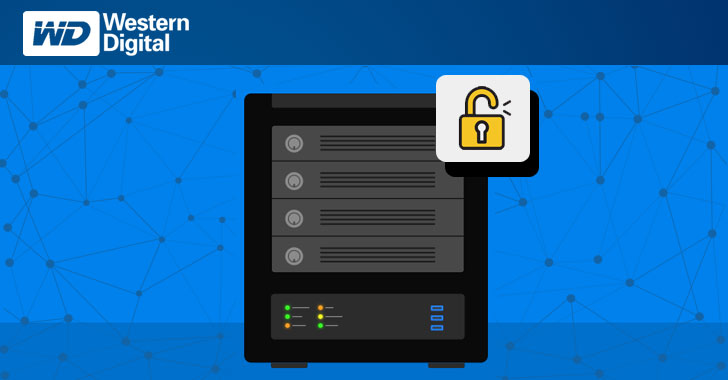September 18, 2018Swati Khandelwal

Security researchers have discovered an authentication bypass
vulnerability in Western Digital’s My Cloud NAS devices that potentially
allows an unauthenticated attacker to gain admin-level control to the
affected devices.
Western Digital’s My Cloud (WD My Cloud) is one of the most popular
network-attached storage (NAS) devices which is being used by businesses
and individuals to host their files, as well as backup and sync them
with various cloud and web-based services.
The WD My Cloud devices let users not only share files in a home network
but its private cloud feature also allows them to access their data
from anywhere around the world at any time.
However, security researchers at Securify have discovered an authentication bypass vulnerability on the WD My Cloud NAS boxes that could allow unauthenticated attackers with network access to the device to escalate their privileges to admin-level without needing to provide a password.
This would eventually allow attackers to run commands that would typically require administrative privileges and gain complete control of the affected NAS device, including their ability to view, copy, delete and overwrite any files that are stored on the device.
ATTENTION: Click Here To Get Over $100,000 Money Transfer Through Bank Transfer Hackers!!!
ATTENTION: Get Your Hacked Western Union MTCN Transfer and Cash Out Over $2500 within minutes!!!
ATTENTION: Click Here For Your Blank/Cloned ATM Cards for ATM Cashout and Online Purchase!!!
Here’s How Easy it is to Hack a WD My Cloud Storage Boxes
The vulnerability, designated CVE-2018-17153, resides in the way WD My Cloud creates an admin session tied to an IP address.
By simply including the cookie username=admin to an HTTP CGI request
send by an attacker to the device’s web interface, the attacker can
unlock admin access and gain access to all the content stored on the NAS
box.
“It was found that it is possible for an unauthenticated attacker to create a valid session without requiring to authenticate,” the researchers explain in a blog post detailing about the flaw published on Tuesday.
“The network_mgr.cgi CGI module contains a command called cgi_get_ipv6 that starts an admin session that is tied to the IP address of the user making the request when invoked with the parameter flag equal to 1. Subsequent invocation of commands that would normally require admin privileges are now authorized if an attacker sets the username=admin cookie.”
Long story short, just tell the WD My Cloud NAS device that you are the
admin user in the cookie, and you are in without ever being asked for a
password.
Proof-of-Concept Exploit Code Released

Securify researchers have also published a proof-of-concept (PoC)
exploit showing how the vulnerability can be exploited with just a few
lines of code.
Obviously, the exploit requires either a local network or internet
connection to a WD My Cloud device in order to be run the command and
bypasses the NAS device’s usual login requirements.
The researchers successfully verified the vulnerability on a Western
Digital My Cloud model WDBCTL0020HWT running firmware version 2.30.172,
though they claimed that this issue is not limited to the model, as most
products in the My Cloud series share the same “vulnerable” code.
Securify researchers found the issue while reverse engineering the CGI
binaries to look for security bugs, and reported it to Western Digital
in April 2017, but did not receive any response from the company.
After almost one-and-half years of silence from Western Digital,
researchers finally publicly disclosed the vulnerability, which is still
unpatched.
This is not the first time Western Digital has ignored the security of its My Cloud NAS device users.
Earlier this year, a researcher publicly disclosed several
vulnerabilities in Western Digital’s My Cloud NAS devices, including a hard-coded password backdoor issue in their firmware after the company did not address the issue, which was reported 180 days before making it public.
Update: Patches Coming Soon!
Western Digital has responded to our story, saying the company is aware
of the vulnerabilities reported by researchers and it is in process of
finalizing a scheduled firmware update to address the issue.
“We expect to post the update on our technical support site at
https://support.wdc.com/ within a few weeks,” the company said in a blog post.
“As a reminder, we also urge customers to ensure the firmware on their
products is always up to date; enabling automatic updates is
recommended.”